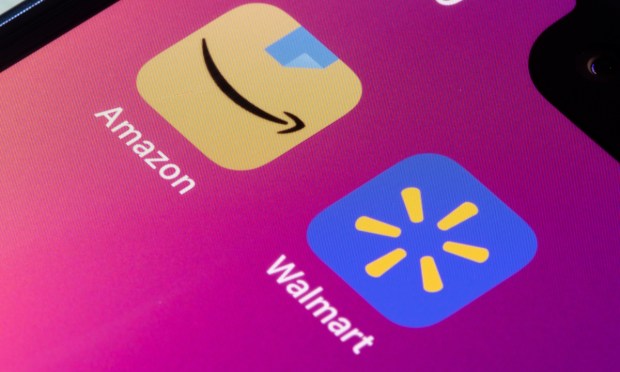Walmart and Amazon Use AI in Battle for Third-Party Sellers

Amazon and Walmart aren’t just battling for the eCommerce crown. They’re also locked in an artificial intelligence (AI) rivalry to woo third-party sellers.
In their quest, both retail giants are leveraging some pretty hot technologies — AI to improve not only the shopping experience for their customers but the selling experience for sellers.
This week, Amazon Ads introduced a generative AI solution, aimed at equipping advertisers to enhance their ad campaigns and create more engaging content.
Currently in its beta phase, this image generation tool allows brands to create lifestyle imagery that enhances the effectiveness of their advertisements, as announced by Amazon in a press release on Wednesday (Oct. 25).
As an example, consider an advertiser who may possess isolated product images, like a toaster, set against a plain white background. Yet, when this same toaster is incorporated into a lifestyle setting, such as positioned on a kitchen counter alongside a croissant, Amazon said click-through rates can surge as much as 40% when compared to ads featuring conventional product images.
With that in mind, the launch aims to assist individuals who may not have in-house resources or agency support. For larger brands, it provides more efficient processes for producing creative content.
Read more: Amazon Launches AI-Powered Image Generation Tool for Advertisers
Meanwhile, Walmart has reportedly been exploring ways to enhance the convenience of shopping. In a blog post published earlier this month, the retailer disclosed its use of AI and augmented reality (AR) technologies to achieve this goal.
By directing AI to generate customized search results for specific scenarios, Walmart is streamlining the customer experience. For example, those planning a Halloween-themed party can now easily find all the necessary products by simply conducting a single search for the theme.
Moreover, Walmart emphasizes its use of AI to assist customers in navigating complex purchasing decisions. By providing personalized recommendations that take into account individual needs and preferences, Walmart aims to simplify the decision-making process. For example, customers looking for a cellphone compatible with their current wireless provider can rely on AI-powered guidance.
Walmart is also delving into voice technology to enrich the shopping experience. Through its mobile app, customers can shop on Walmart.com by voice command and engage in conversations with the digital assistant. This hands-free shopping feature also enables customers to reserve pickup and delivery time slots.
Walmart is using AR tools for clothing and home goods. By combining the capabilities of generative AI and AR, Walmart’s aim is to provide customers with personalized design assistance. Shoppers can convey their budget, theme preferences, and design tastes to receive tailor-made recommendations for room decor, enabling them to visualize their desired space before making a purchase.
According to a recent September report in PYMNTS, the ongoing competition between Amazon and Walmart for third-party sellers has brought to light a significant distinction. PYMNTS highlighted the disparity in the geographic reach of these marketplaces. While Walmart concentrates its efforts on the United States, Canada and Mexico, Amazon operates a vast seller network spanning 22 countries. This extensive global coverage includes markets such as Australia, Germany, Japan and the United Arab Emirates, giving Amazon a clear advantage in terms of global market penetration.
As per PYMNTS Intelligence’s findings, in the second quarter of 2023, third-party sellers on Amazon were responsible for selling 6 out of every 10 units. This share has displayed steady, albeit gradual, growth in recent years, increasing by seven percentage points compared to the first quarter of 2019.
As a result, third-party sales comprise 73% of the overall online sales value on Amazon.
Read more: Walmart Hopes Third-Party Marketplace Will Snag Holiday Spend From Amazon
However, as both retail giants acknowledge the potential of incorporating AI into their platforms for third-party sellers and strive to appeal to third-party sellers, the question arises, Which retailer will become their preferred choice?

